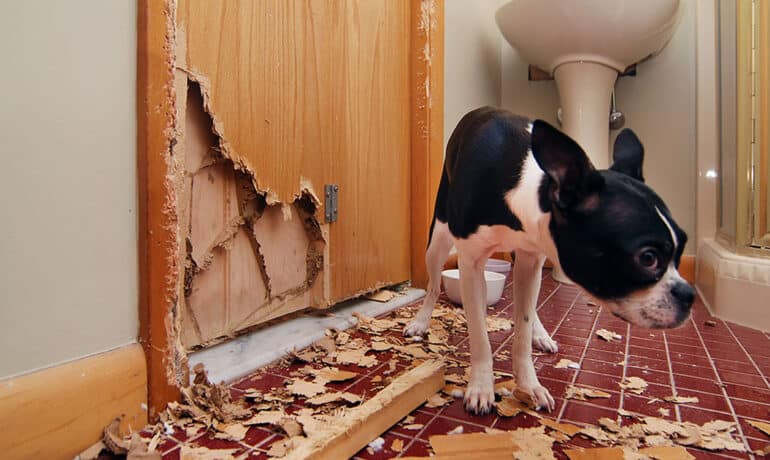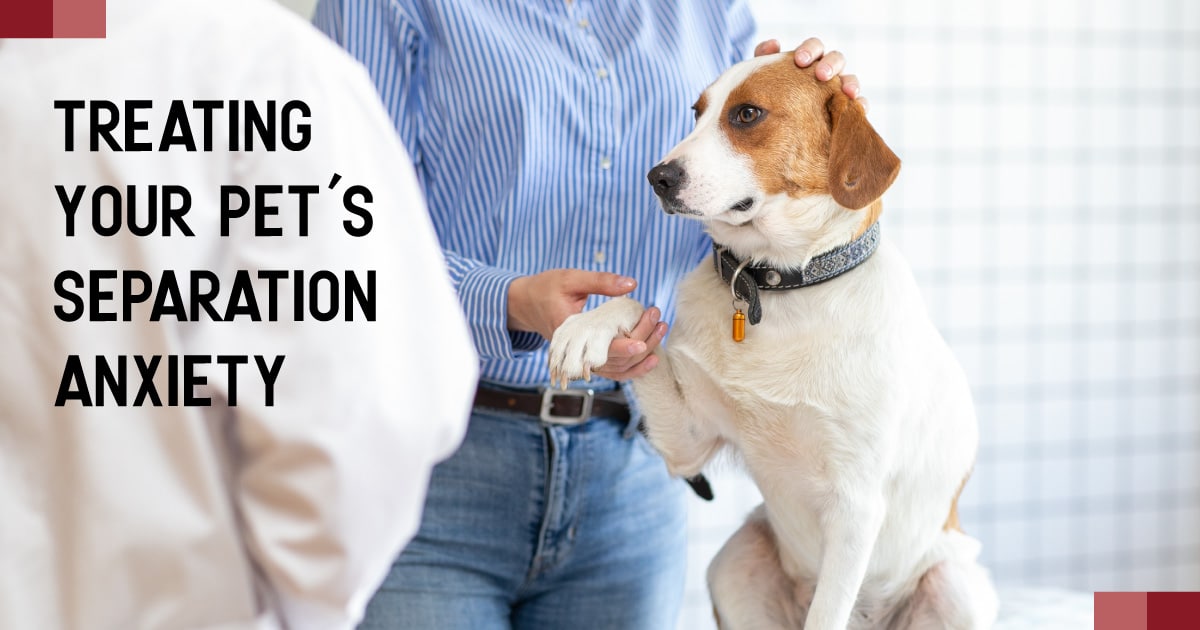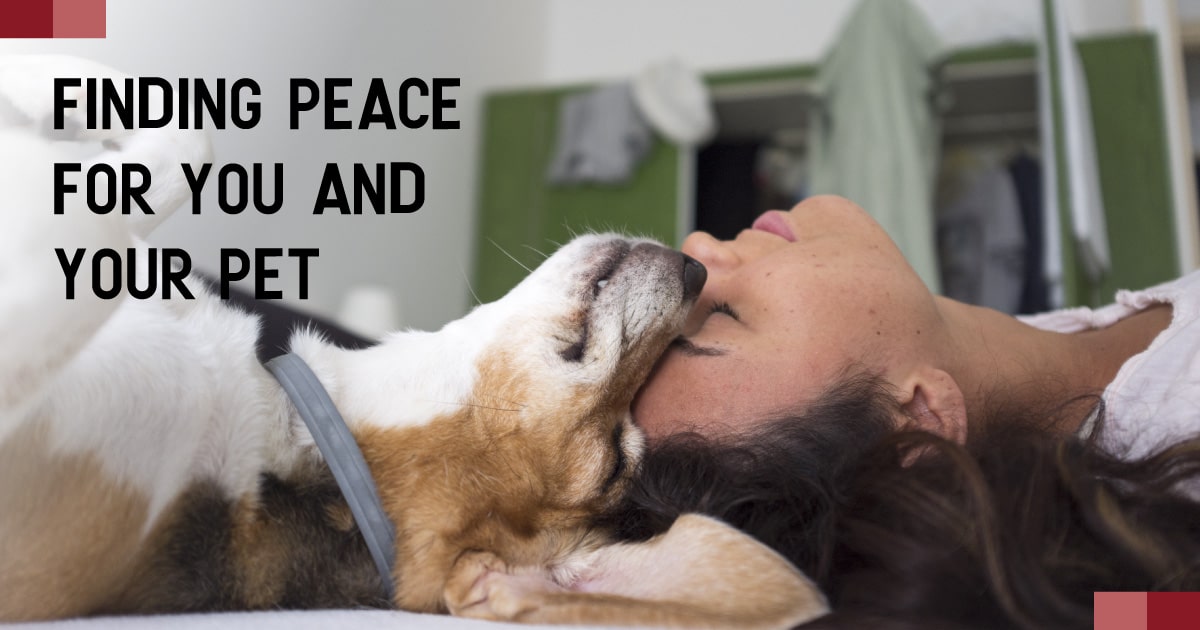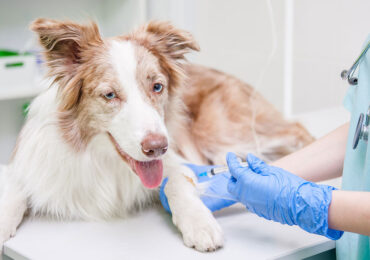We all do the best we can for our pets, creating a life that allows them to be healthy, comfortable, and happy. Despite these efforts, many owners still find themselves encountering disruptive and destructive behaviors from their pets when they are left alone.
Just like people, pets can experience anxiety at various levels.
Separation anxiety, however, is more than the typical “watch-you-out-the-window” cry or “chewed-up-another-pair-of-shoelaces” mischief. It is a clinical disorder that can occur when an animal that is hyper-attached to his/her owner(s) gets stressed when left alone.
Continued emotional distress can lead to separation anxiety. Some triggers include:
- Abandonment or change in ownership
- Loss of a family member or other pet
- Dramatic change in routine or schedule
- Suffering a traumatic event, such as time at a shelter or boarding kennel
- Being left alone when accustomed to constant human contact
Why Does Separation Anxiety Happen?
This issue can develop even in well-behaved or well-socialized pets. While the triggers above can produce separation anxiety, it’s still unclear why it occurs in some pets and not in others.
The problems caused by this behavioral disorder are a large reason why many people get frustrated with their animals and give them up. Many pet owners face this battle, so you’re not alone if you have a pet suffering from separation anxiety.
It’s important for pet owners to recognize that the disorder is not their fault and pets need patience and understanding. As upsetting as it can be to come home to destroyed furniture or other destructive behaviors, your pet is experiencing trauma that creates these reactions and they don’t do it to make you angry or out of spite.
Signs of Separation Anxiety
A key thing to note with separation anxiety is that ill-behaviors tend to show up only when you are in the process of leaving or have left your pet. If pets are otherwise well-behaved and only act out in these instances, it may be due to this mental stress.
Common symptoms that may occur when you leave are:
- Improper Elimination [Urinating and Defecating]
- Relentless Barking and Howling
- Chewing, Digging and Destruction
- Self-Harm
- Escaping and Pacing
- Excessive Drooling and Panting
Before treating your pet, talk to your vet about any symptoms you see to rule out medical problems like infections, hormone problems or other health conditions. Some medications or illnesses can cause accidents or changes in behavior that mimic separation anxiety.
If your pet’s separation anxiety is mild…
Give them a special treat, like a puzzle toy stuffed with peanut butter. Be sure to only give them this treat when you’re leaving and take it away when you’re home.
Make coming and goings low-key. Leave your animal to its own devices for the first few minutes before you leave and after you get home. This gives them time to calm down and have less emotion attached to your departures.
Leave recently worn clothes so that they have something familiar and comforting with your scent to snuggle up with while you’re gone.
Develop a safety cue like turning the radio or TV on or giving a certain toy or bone. Practice giving your animal the cue right before you leave for short periods of time and then gradually increase the time separated.
Exercise your animal before departing. Tiredness often leads to calmness and at least 30 minutes of exercise could divert their attention to sleep.
If your pet has severe separation anxiety…
Talk with your vet about desensitization training, the primary treatment for severe cases of separation anxiety that helps develop a systematic process for getting your dog used to being alone.
Use counter conditioning as a way to turn an unpleasant experience for your animal into a pleasant experience. Ask a vet, professional trainer or learn about this method through online resources.
Learn, teach, and practice the sit-stay and down-stay technique. This method can help your pet remain calm and happy in one place while you’re in another.
Methods that Won’t Help with Separation Anxiety
Punishment – Punishment is never an effective way to treat separation anxiety and can worsen symptoms.
Another animal – Getting your animal a companion usually won’t help because anxiety stems from being away from an owner, and not a from a need to be with other animals.
Crating – Crating your animal when they aren’t used to it will not help unless the crate is already a safe place for them.
Radio/TV noise – Unless developed and used as a ‘safety cue’, turning the TV and radio on won’t automatically reduce anxiety.
Obedience training – Even the most obedient animals can have separation anxiety. Anxiety is usually not the result of disobedience or lack of training.
Keeping Your Pet Calm in the Meantime
Training can take weeks, months or years to fully reverse your animal’s separation anxiety. However, it is possible with the right guidance from your vet, consistent training and care, and adapting in the meantime to help your pet through the training process.
To cope with the issues short-term:
- Consult with your veterinarian about drug therapy. Anti-anxiety drugs are available that can help reduce your animal’s stress as a temporary measure.
- If possible, take your animal to a daycare facility or boarding kennel when you’re gone for long periods of time.
- Leave your pet with a friend, family member or neighbor if they are willing to help.
- Take your animal to work with you if ever possible.
Creating a comfortable and harmonious life for you, your pet, and family while dealing with separation anxiety can pose its challenges, but it is certainly possible. If your pet is showing any of the signs above, please consult with your vet to determine the cause, severity, and proper treatments and training to move forward. Separation anxiety is long-term emotional distress and can harm your animal’s wellbeing.
If you believe your pet has separation anxiety or have other questions and concerns, please do not hesitate to visit or contact us. If your pet is in immediate danger, please call 701.757.3500.









